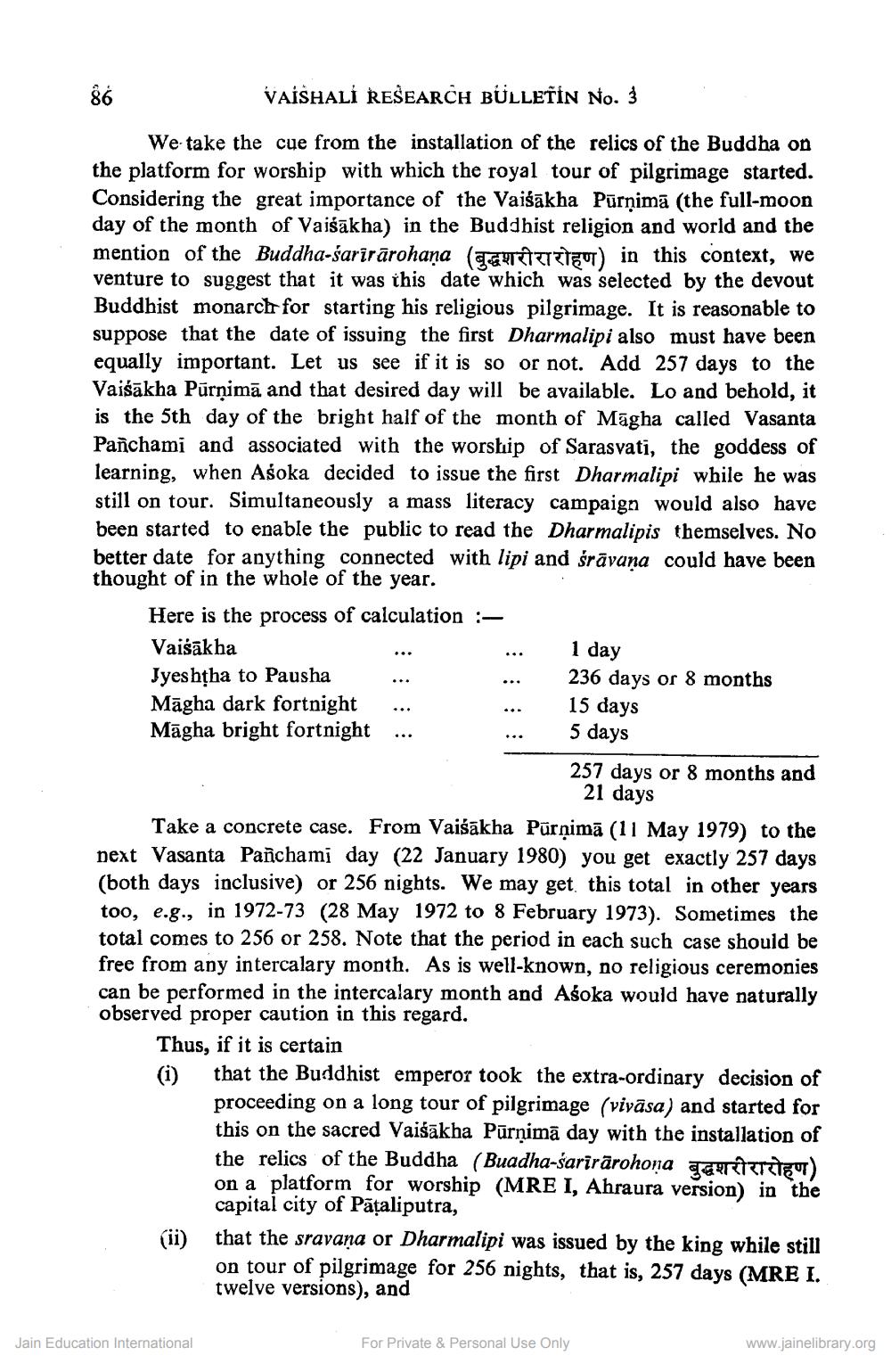________________
888
86
VAISHALI RESEARCH BULLETIN No. 3
We take the cue from the installation of the relics of the Buddha on the platform for worship with which the royal tour of pilgrimage started. Considering the great importance of the Vaisakha Pūrṇimā (the full-moon day of the month of Vaisakha) in the Buddhist religion and world and the mention of the Buddha-sarirarohana (g) in this context, we venture to suggest that it was this date which was selected by the devout Buddhist monarch for starting his religious pilgrimage. It is reasonable to suppose that the date of issuing the first Dharmalipi also must have been equally important. Let us see if it is so or not. Add 257 days to the Vaiśākha Pūrṇima and that desired day will be available. Lo and behold, it is the 5th day of the bright half of the month of Magha called Vasanta Panchami and associated with the worship of Sarasvati, the goddess of learning, when Aśoka decided to issue the first Dharmalipi while he was still on tour. Simultaneously a mass literacy campaign would also have been started to enable the public to read the Dharmalipis themselves. No better date for anything connected with lipi and śrāvana could have been thought of in the whole of the year.
Here is the process of calculation :
Vaisakha
Jyeshtha to Pausha
Magha dark fortnight Magha bright fortnight
1 day
236 days or 8 months 15 days
5 days
257 days or 8 months and 21 days
you get exactly 257 days
Take a concrete case. From Vaisakha Pūrṇima (11 May 1979) to the next Vasanta Panchami day (22 January 1980) (both days inclusive) or 256 nights. We may get this total in other years too, e.g., in 1972-73 (28 May 1972 to 8 February 1973). Sometimes the total comes to 256 or 258. Note that the period in each such case should be free from any intercalary month. As is well-known, no religious ceremonies can be performed in the intercalary month and Aśoka would have naturally observed proper caution in this regard.
Thus, if it is certain
(i)
that the Buddhist emperor took the extra-ordinary decision of proceeding on a long tour of pilgrimage (vivāsa) and started for this on the sacred Vaiśākha Pūrṇima day with the installation of the relics of the Buddha (Buadha-sarirarohona <<<g") on a platform for worship (MRE I, Ahraura version) in the capital city of Paṭaliputra,
Jain Education International
(ii)
that the sravana or Dharmalipi was issued by the king while still on tour of pilgrimage for 256 nights, that is, 257 days (MRE I. twelve versions), and
For Private & Personal Use Only
www.jainelibrary.org




